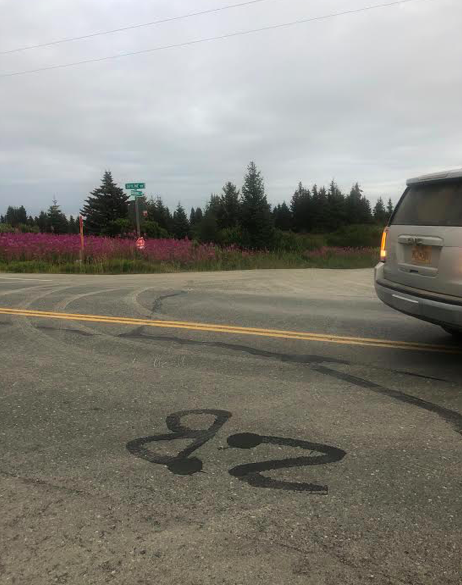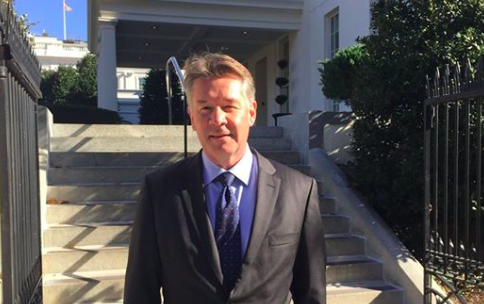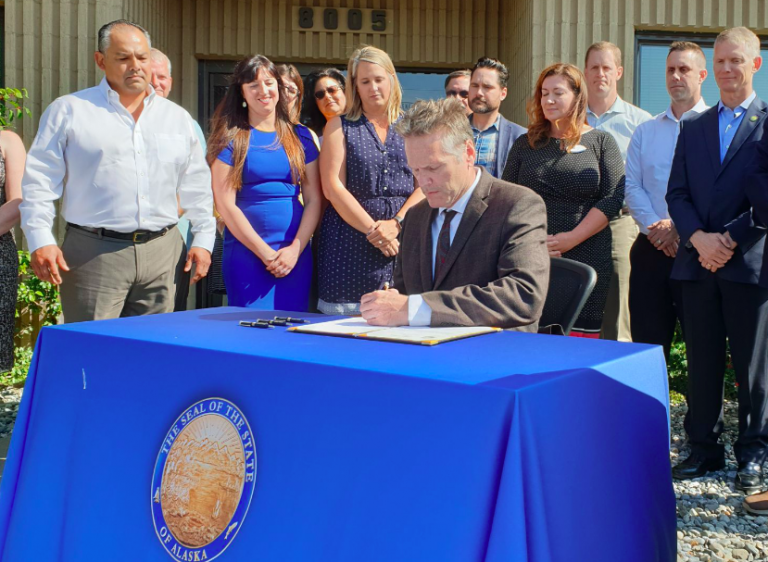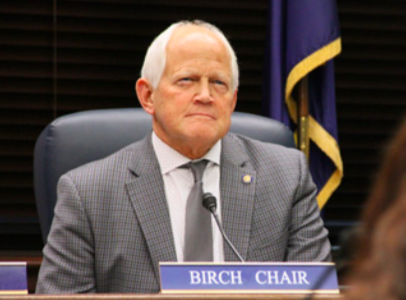HOMEOWNERS REQUEST VACATING EASEMENT TO PREVENT STALKING, CLIFF FALLS
Zac Brown is a wildly successful musician, an accomplishment that has brought him a degree of celebrity he must deal with daily as he travels from show to show with the Zac Brown Band. It goes with the territory in the entertainment business.
The country music star says he is also a regular guy, with a wife and five children. When he purchased property in Homer, Alaska, he hoped to provide a normal life for his children as they grow.
But his little piece of paradise in the Cosmic Hamlet by the Sea has become the target of a few locals, some of whom Brown named on a radio show this week: John Fowler, an Anchorage man who owns adjacent property below Brown’s land, Willy Dunne, who serves on the Kenai Borough Assembly and lives off of East End Road, and Michael Armstrong, a writer at the local Homer News.
Between the three of them, they’ve made Brown’s life a living hell as they send people up to Brown’s property to try to establish a trail that they call “historic.”
At least that is how Brown has described the situation on the Michael Dukes show. He decided to take his case to the listening audience after getting the impression the reporter from the local newspaper was against him. Armstrong had repeatedly printed photos of the Brown home under construction and had given readers explicit instructions for how to reach it, and it seemed to Brown he had created a purposeful flood of lookie-lous.
According to Brown, Fowler was trying to sell him some adjacent property for double the market value. When Brown decided he wasn’t interested at that price, Fowler said he would start sending people up to Brown’s property along the section line easement, a 10-foot span along the side of his land. A witness of the encounter corroborated Brown’s story to Must Read Alaska.
Brown said Fowler enlisted the help of Assemblyman Dunne and Armstrong to harass him.
Brown’s property sits at the end of a dead-end road on a bluff above the town of Homer. In addition to the property where he is building his house, he purchased several lots below, to protect the privacy of his family.
The property belonging to Fowler is also below him. Fowler and his friends claim the public has legal access to the section easement and are trying to build a case for making it a public trail.
Brown said Fowler is simply trying to build a trail to increase the value of his own land, which he has named “Canyon Trails,” as part of his marketing package to prospective buyers, and to attack Brown’s sense of safety in order to force him to purchase his land.
“I’m the golden ticket so he can get them sold,” Brown said.
The matter of the easement is in the hands of the Alaska Department of Natural Resources, which will consider the decision of the borough. The borough’s planning department says it has no need for the easement and is willing to vacate it.
In fact, the State Department of Natural Resources has said there is no historic trail there.
But Roberta Highland, who is with the Kachemak Bay Conservation Society, says that the section line easement should remain open. She is relying on a pamphlet written in 1994 that described a trail in the vicinity. According to that pamphlet, the trail route changed from time to time, depending on the conditions.
According to Brown, the trail group are producing maps and sending people up to Brown’s land to harass him and his family, causing him to have to bring his children inside to escape the lenses of celebrity seekers. Instead of privacy, he’s been hounded by the campaign fomented by Dunne and Fowler, and aided by Armstrong. He feels they’ve made him a prisoner in his own home.
He also said he has video of Assemblyman Dunne trespassing on his property, and that Armstrong has been complicit by repeatedly putting a photograph of the log home, under construction, in the newspaper.
“Carloads full of people — 12 cars a day come down our road and it’s not a pass-through road. It’s intentionally way off the cut,” Brown said. Others who live nearby said Brown has underestimated the number of cars now going down the road, and that over 50 cars are now common, most of them taking pictures of Brown’s home.
“His (Fowler’s) realtor comes with nine people, they loiter around my house and walk through my construction. I’ve been painted as an antagonist,” Brown said. “I am not someone who feels good about being extorted.”
Someone even spray painted on Skyline Drive the letters “ZB” at the intersection that leads to his and two other houses at the end of the road.

Brown described how his young son came into the house distraught after he saw the graffiti, fearful that people “were hunting my daddy.”
The one thing that Brown values most is his family’s safety and privacy, he said. But when the local paper publicized his name, rather than using the name of the limited liability corporation that he purchased the property under, and when the paper published photos of his house, his privacy started to vanish. Trespassers became common.
Brown said one man with a baby in a backpack came up the steep slope, which is more than 57 percent in one place, and the baby fell out of the backpack and tumbled; the man tumbled as well. The baby could be heard wailing for 45 minutes afterward. Another man and his horse tumbled down the cliff as he made his way up the section line.
It’s a safety hazard, Brown said, not a safe historic trail like it’s being portrayed.
Plus, it’s his property.
The Zac Brown Band is based in Atlanta, Georgia, but Brown said he wants to spend much of the year in Homer, where he has invested in a local business, and where he loves the community. He just doesn’t love way some are violating his rights.
The matter of the property rights vs. trails through the Gruening Vista West Home Owners Association will be taken up at the Aug. 12 meeting of the Borough Planning Commission, at the Navarre Administration Building in Soldotna. The commission will be considering the recommendation of the borough’s planning department to vacate the easement. The meeting starts at 7:30 pm.










